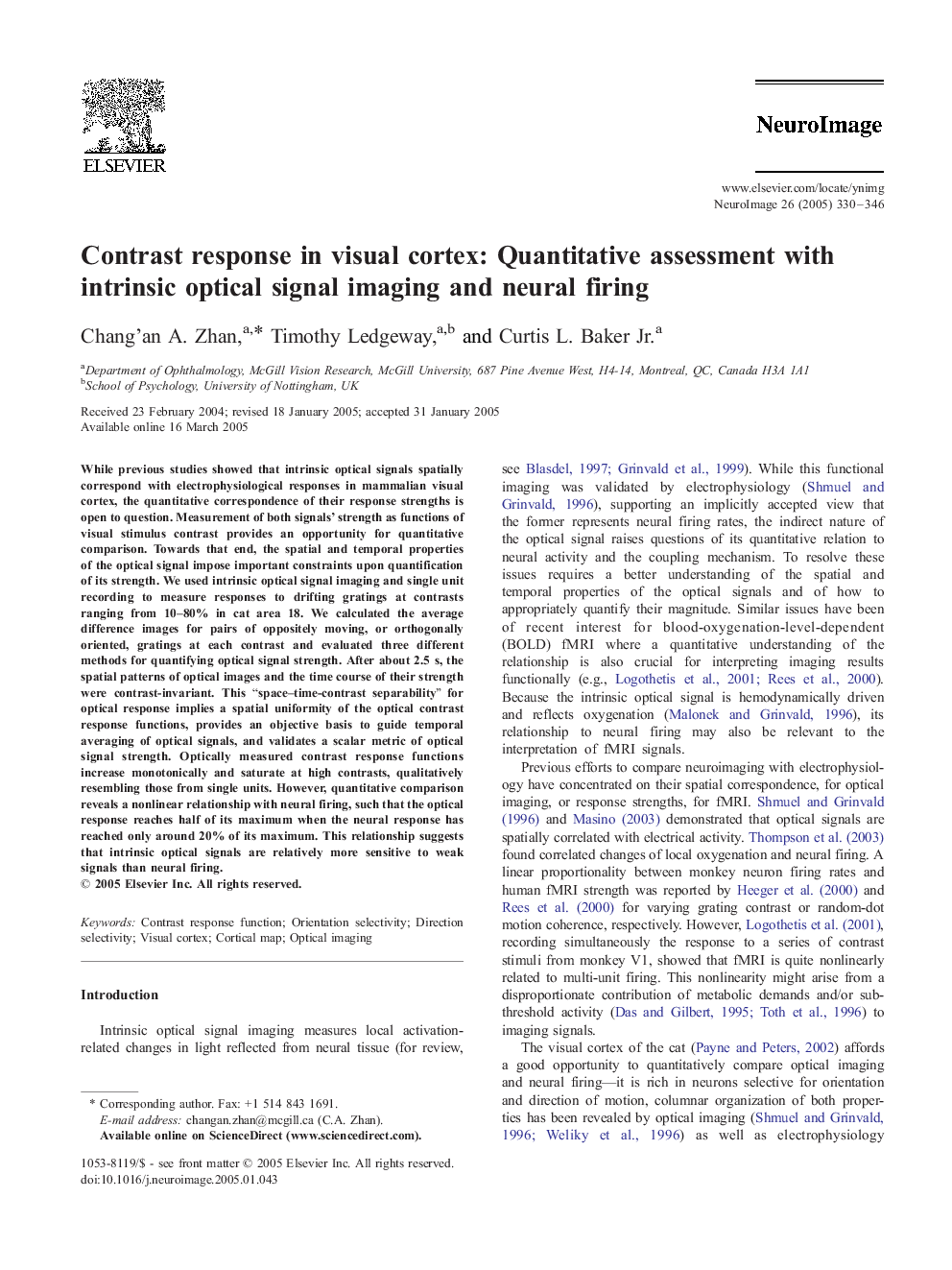| Article ID | Journal | Published Year | Pages | File Type |
|---|---|---|---|---|
| 9197896 | NeuroImage | 2005 | 17 Pages |
Abstract
While previous studies showed that intrinsic optical signals spatially correspond with electrophysiological responses in mammalian visual cortex, the quantitative correspondence of their response strengths is open to question. Measurement of both signals' strength as functions of visual stimulus contrast provides an opportunity for quantitative comparison. Towards that end, the spatial and temporal properties of the optical signal impose important constraints upon quantification of its strength. We used intrinsic optical signal imaging and single unit recording to measure responses to drifting gratings at contrasts ranging from 10-80% in cat area 18. We calculated the average difference images for pairs of oppositely moving, or orthogonally oriented, gratings at each contrast and evaluated three different methods for quantifying optical signal strength. After about 2.5 s, the spatial patterns of optical images and the time course of their strength were contrast-invariant. This “space-time-contrast separability” for optical response implies a spatial uniformity of the optical contrast response functions, provides an objective basis to guide temporal averaging of optical signals, and validates a scalar metric of optical signal strength. Optically measured contrast response functions increase monotonically and saturate at high contrasts, qualitatively resembling those from single units. However, quantitative comparison reveals a nonlinear relationship with neural firing, such that the optical response reaches half of its maximum when the neural response has reached only around 20% of its maximum. This relationship suggests that intrinsic optical signals are relatively more sensitive to weak signals than neural firing.
Keywords
Related Topics
Life Sciences
Neuroscience
Cognitive Neuroscience
Authors
Chang'an A. Zhan, Timothy Ledgeway, Curtis L. Jr.,
